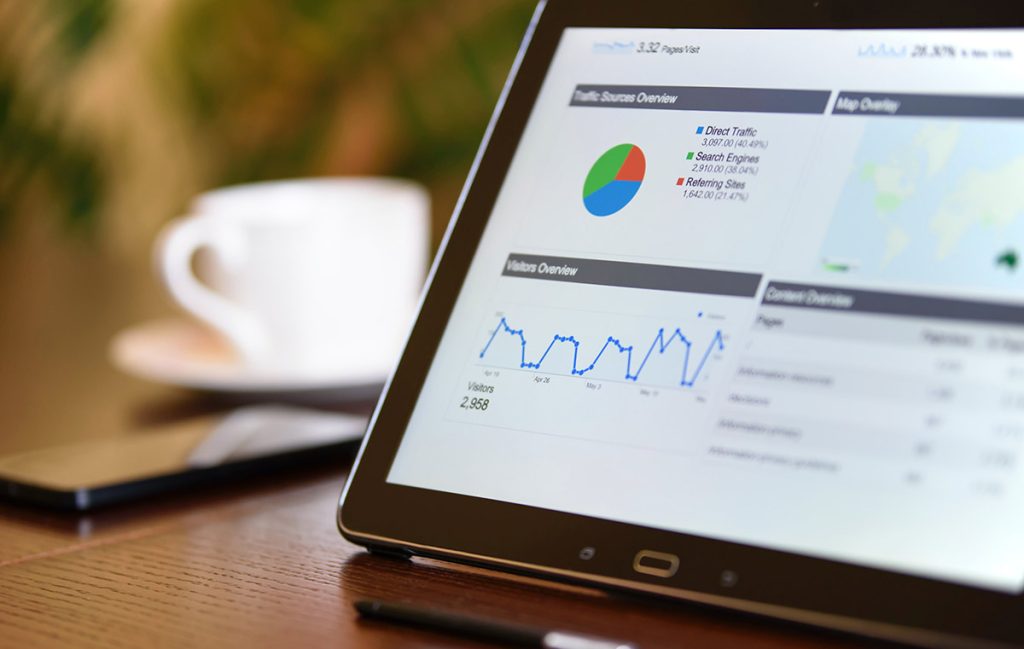Data-Driven Decision-Making: Using Analytics to Enhance Marketing Strategies

In today’s digital landscape, data-driven decision-making has become the cornerstone of successful marketing strategies. Harnessing the power of analytics not only offers insights into consumer behavior but also empowers marketers to make informed and impactful decisions. This article delves into the significance of data-driven decision-making in optimizing marketing strategies for better ROI and customer engagement.
Understanding the Importance of Data-Driven Decision-Making
In today’s fiercely competitive market, the significance of data-driven decision-making cannot be overstated. According to a McKinsey report, businesses leveraging data to drive decisions witness a substantial performance boost. They are 5% more productive and 6% more profitable than competitors that rely solely on intuition or outdated methodologies. This statistical difference underscores the transformative power of data in shaping successful strategies.
The reliance on data empowers marketers to transcend guesswork and gut feelings, fostering a culture of informed decision-making grounded in factual analysis. With an abundance of data at their disposal, marketers can delve deeper into consumer behavior, preferences, and trends that would otherwise remain obscured. This clarity enables marketers to discern intricate patterns and predict future market dynamics.
Consider a scenario where an e-commerce company analyzes user behavior data. By meticulously examining browsing habits, purchase histories, and abandoned carts, they uncover patterns indicating specific customer preferences. Armed with these insights, they tailor product recommendations and marketing messages, resulting in heightened customer engagement and increased sales conversions.
Moreover, data-driven decision-making allows for agile and responsive strategies. In a fast-paced market, trends evolve swiftly, and consumer behaviors change rapidly. Marketers adept at leveraging data can swiftly adapt campaigns, content, and strategies to align with shifting trends. This adaptability enables them to stay ahead of the curve and meet the ever-changing needs of their audience.
In essence, data-driven decision-making acts as a compass guiding marketers through a maze of possibilities. By harnessing the power of data analytics, marketers not only comprehend their audience better but also possess the foresight to navigate market complexities and optimize strategies for maximum effectiveness.
Leveraging Analytics Tools for Marketing Insights
Analytics tools are the backbone of data-driven marketing strategies, offering invaluable insights into user behavior and campaign performance. Google Analytics stands as a ubiquitous and powerful tool, offering a comprehensive view of website traffic, user demographics, acquisition sources, and user journey patterns. According to BuiltWith, an astonishing 56.1% of all websites use Google Analytics, underscoring its dominance in the field.
However, Google Analytics is just the tip of the iceberg. HubSpot’s integrated suite not only provides robust analytics but also seamlessly ties these insights directly to marketing campaigns. It offers a holistic view of customer interactions across various touchpoints, allowing marketers to track and analyze leads, conversions, and customer journey stages. This integration aids in developing targeted and personalized marketing strategies aligned with specific audience behaviors and preferences.
Moreover, specialized tools like SEMrush are instrumental for SEO analysis. SEMrush empowers marketers to conduct keyword research, track rankings, and analyze competitors’ strategies, thereby enhancing the visibility and performance of their content in search engine results.
Social media analytics platforms such as Sprout Social and Buffer offer deep insights into audience sentiment and engagement across diverse channels. They provide metrics on post reach, engagement rates, audience demographics, and sentiment analysis, enabling marketers to fine-tune their social media strategies for optimal engagement and brand resonance.
Consider a scenario where a company uses Google Analytics to track website traffic patterns and HubSpot for comprehensive lead nurturing. By analyzing data from both platforms, they identify specific touchpoints where leads interact most before converting. This insight allows them to optimize these touchpoints and personalize content, resulting in increased conversions and a more streamlined customer journey.
In conclusion, these analytics tools act as a compass, guiding marketers through the intricate landscape of consumer behavior and campaign effectiveness. By leveraging these tools in tandem, marketers gain comprehensive insights that drive informed decisions and ultimately fuel more impactful marketing strategies.
Implementing Data-Driven Strategies for Enhanced Targeting
Segmentation forms the bedrock of effective targeting in marketing endeavors. It’s not just about reaching the audience but resonating with them. Forbes reports that businesses implementing personalized website experiences witness an average uplift of 19% in sales. This underlines the undeniable impact of tailored marketing messages on consumer behavior and conversions.
Leveraging data for segmentation allows marketers to dive deep into their audience demographics, behaviors, and preferences. By categorizing audiences into distinct segments based on factors like purchase history, browsing behavior, or geographic location, marketers can craft hyper-targeted campaigns that resonate with specific audience subsets.
For instance, an e-commerce company utilizing data-driven segmentation might identify a segment of customers interested in eco-friendly products. They then personalize their email campaigns, website banners, and social media content to highlight eco-friendly offerings. This targeted approach fosters a stronger emotional connection with the audience, leading to increased engagement and higher conversion rates within that segment.
Furthermore, data-driven segmentation allows for dynamic content personalization. Marketers can deliver customized content tailored to specific audience preferences at different stages of the customer journey. Personalized recommendations based on past behavior or personalized email campaigns addressing specific pain points are examples of how data-driven segmentation can drive conversions and foster customer satisfaction.
The bottom line is that data-driven segmentation isn’t just about dividing the audience; it’s about creating meaningful connections. By understanding their audience on a granular level, marketers can deliver personalized experiences that resonate with individuals, leading to stronger brand loyalty, increased conversions, and ultimately, business growth.
Optimizing Marketing Campaigns through Continuous Analysis
The crux of data-driven decision-making lies not just in gathering data but in leveraging it for ongoing improvement. Continuous analysis and optimization serve as the engines propelling successful marketing campaigns in a dynamic landscape.
A/B testing stands as a quintessential example, proven to increase conversion rates for 48% of businesses (Source: eConsultancy). This methodology involves comparing two variations of a marketing element, such as a webpage, email subject line, or ad copy, to determine which yields better results. It allows marketers to scientifically validate hypotheses and refine strategies based on empirical evidence rather than assumptions.
Furthermore, tools like Buffer exemplify the value of robust analytics in refining content strategies. Buffer’s analytics provide insights into post performance, engagement metrics, and audience behavior across various social media platforms. By analyzing these metrics, marketers gain valuable insights into what content resonates most with their audience, enabling them to fine-tune their content strategies for maximum impact.
Moreover, monitoring key performance indicators (KPIs) serves as a compass guiding marketers toward success. Metrics like click-through rates, conversion rates, and customer acquisition costs act as benchmarks, offering a clear picture of campaign performance. By closely monitoring these KPIs, marketers can identify trends, detect areas needing improvement, and pivot strategies in real-time.
For instance, imagine a company running a digital advertising campaign. By regularly analyzing KPIs, they notice a sudden drop in click-through rates for a particular ad set. This prompts them to swiftly adjust the ad copy and targeting parameters, leading to a significant improvement in performance and, ultimately, a higher return on investment.
In essence, continuous analysis and optimization are the lifeblood of data-driven decision-making in marketing. By embracing a culture of agility and adaptation fueled by data insights, marketers can stay ahead of the curve, consistently refine their strategies, and drive continual improvement in their campaigns.
Takeaways
In conclusion, data-driven decision-making has transcended being a choice and has become a necessity for marketers striving for sustainable growth and success. Embracing a culture of data-driven decision-making empowers marketers to stay ahead in a dynamic and competitive landscape, driving continual improvement and innovation.









